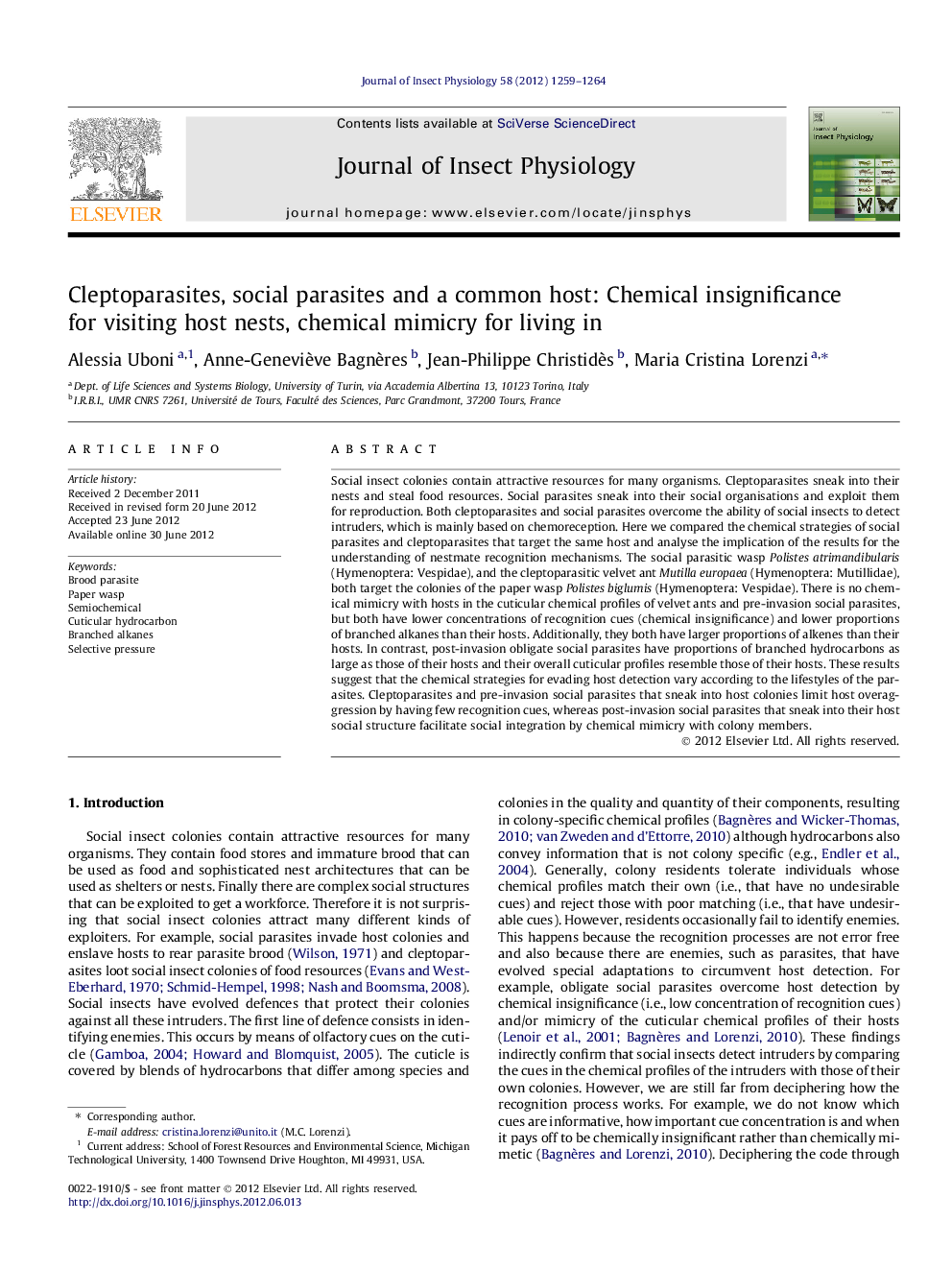| کد مقاله | کد نشریه | سال انتشار | مقاله انگلیسی | نسخه تمام متن |
|---|---|---|---|---|
| 5921798 | 1165333 | 2012 | 6 صفحه PDF | دانلود رایگان |

Social insect colonies contain attractive resources for many organisms. Cleptoparasites sneak into their nests and steal food resources. Social parasites sneak into their social organisations and exploit them for reproduction. Both cleptoparasites and social parasites overcome the ability of social insects to detect intruders, which is mainly based on chemoreception. Here we compared the chemical strategies of social parasites and cleptoparasites that target the same host and analyse the implication of the results for the understanding of nestmate recognition mechanisms. The social parasitic wasp Polistes atrimandibularis (Hymenoptera: Vespidae), and the cleptoparasitic velvet ant Mutilla europaea (Hymenoptera: Mutillidae), both target the colonies of the paper wasp Polistes biglumis (Hymenoptera: Vespidae). There is no chemical mimicry with hosts in the cuticular chemical profiles of velvet ants and pre-invasion social parasites, but both have lower concentrations of recognition cues (chemical insignificance) and lower proportions of branched alkanes than their hosts. Additionally, they both have larger proportions of alkenes than their hosts. In contrast, post-invasion obligate social parasites have proportions of branched hydrocarbons as large as those of their hosts and their overall cuticular profiles resemble those of their hosts. These results suggest that the chemical strategies for evading host detection vary according to the lifestyles of the parasites. Cleptoparasites and pre-invasion social parasites that sneak into host colonies limit host overaggression by having few recognition cues, whereas post-invasion social parasites that sneak into their host social structure facilitate social integration by chemical mimicry with colony members.
Highlights⺠We studied recognition cues in cleptoparasites and social parasites that share a host. ⺠Cleptoparasites and social parasites have fewer recognition cues than their hosts. ⺠Cleptoparasites and pre-invasion social parasites have fewer branched hydrocarbons. ⺠Post-invasion social parasites have as many branched hydrocarbons as their hosts. ⺠Branched hydrocarbons play key roles as recognition cues.
Journal: Journal of Insect Physiology - Volume 58, Issue 9, September 2012, Pages 1259-1264